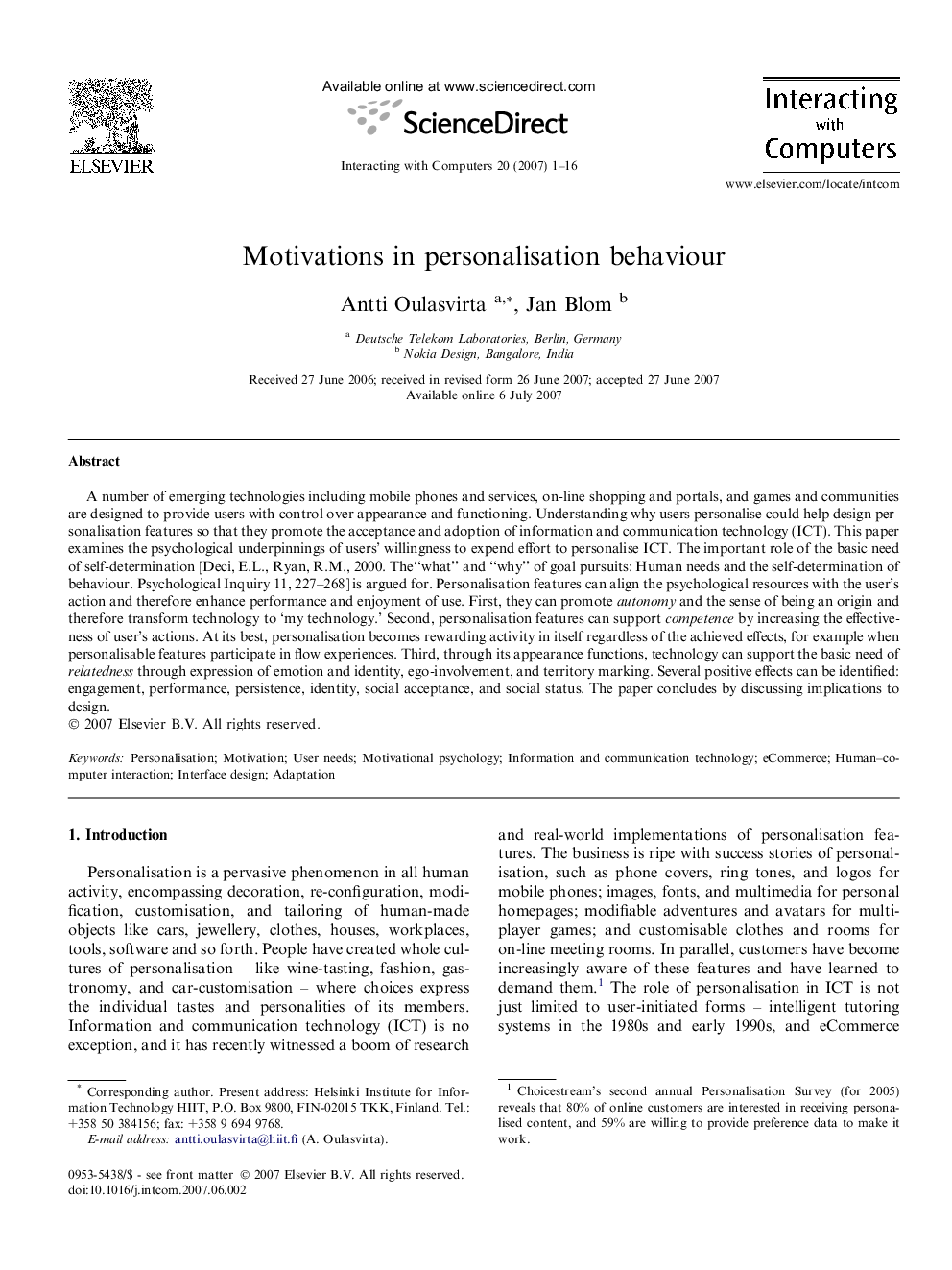| کد مقاله | کد نشریه | سال انتشار | مقاله انگلیسی | نسخه تمام متن |
|---|---|---|---|---|
| 551610 | 872907 | 2008 | 16 صفحه PDF | دانلود رایگان |

A number of emerging technologies including mobile phones and services, on-line shopping and portals, and games and communities are designed to provide users with control over appearance and functioning. Understanding why users personalise could help design personalisation features so that they promote the acceptance and adoption of information and communication technology (ICT). This paper examines the psychological underpinnings of users’ willingness to expend effort to personalise ICT. The important role of the basic need of self-determination [Deci, E.L., Ryan, R.M., 2000. The“what” and “why” of goal pursuits: Human needs and the self-determination of behaviour. Psychological Inquiry 11, 227–268] is argued for. Personalisation features can align the psychological resources with the user’s action and therefore enhance performance and enjoyment of use. First, they can promote autonomy and the sense of being an origin and therefore transform technology to ‘my technology.’ Second, personalisation features can support competence by increasing the effectiveness of user’s actions. At its best, personalisation becomes rewarding activity in itself regardless of the achieved effects, for example when personalisable features participate in flow experiences. Third, through its appearance functions, technology can support the basic need of relatedness through expression of emotion and identity, ego-involvement, and territory marking. Several positive effects can be identified: engagement, performance, persistence, identity, social acceptance, and social status. The paper concludes by discussing implications to design.
Journal: Interacting with Computers - Volume 20, Issue 1, January 2008, Pages 1–16